YYYYMMDD >>> BACK HOME <<< >>> SELECTED FEATURES <<< >>> HIDDEN ARCHIVE <<<
[20220308]
THE UNROOTED: SLEEPING WOMAN GOING TO BATTLE by EVA KOŤÁTKOVÁ at MEYER RIEGGER [from 20211126 to 20220129]
[Photos: Lukas Giesler] [Images: Eva Koťátková, installation view at Meyer Riegger, Karlsruhe, 2022]












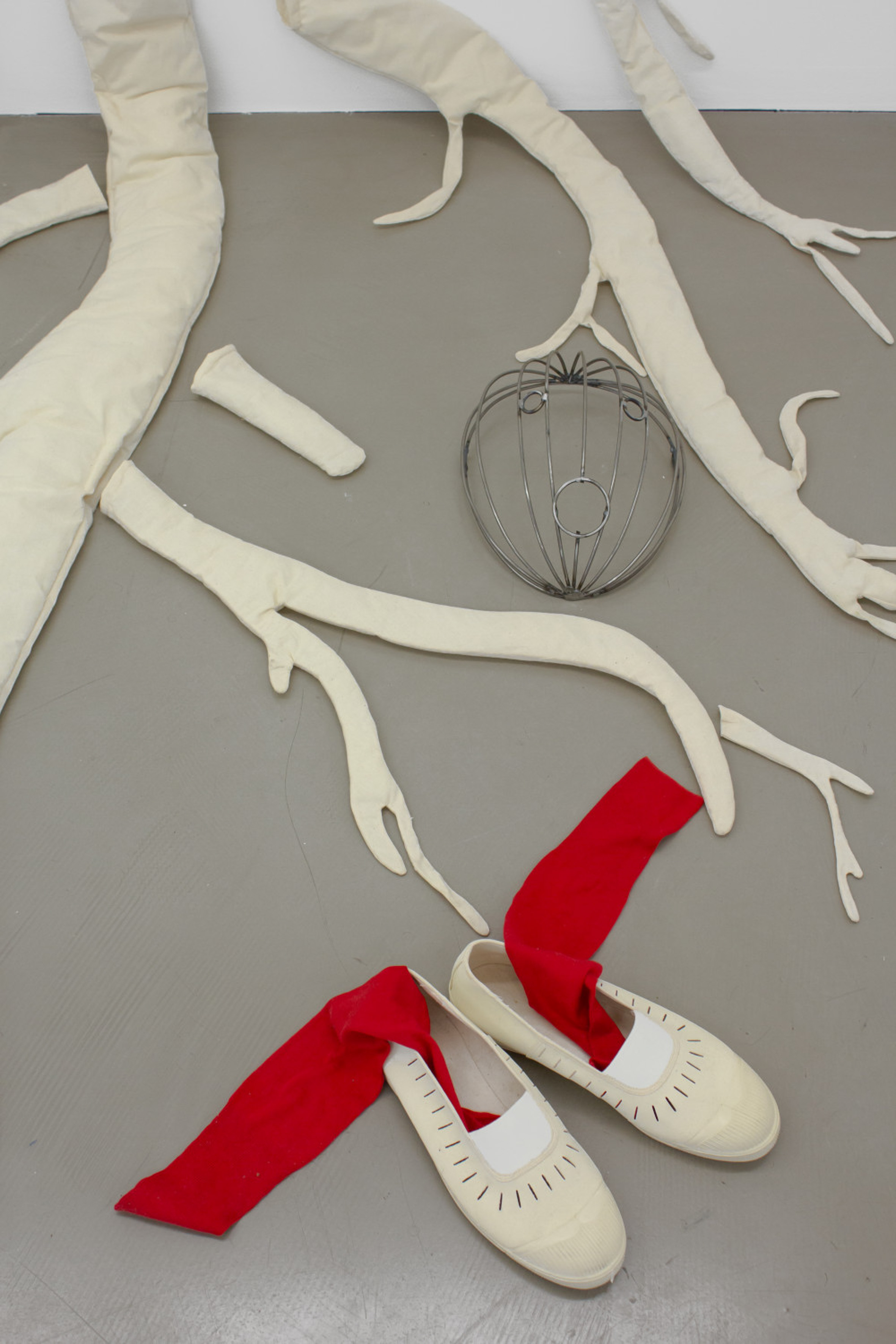




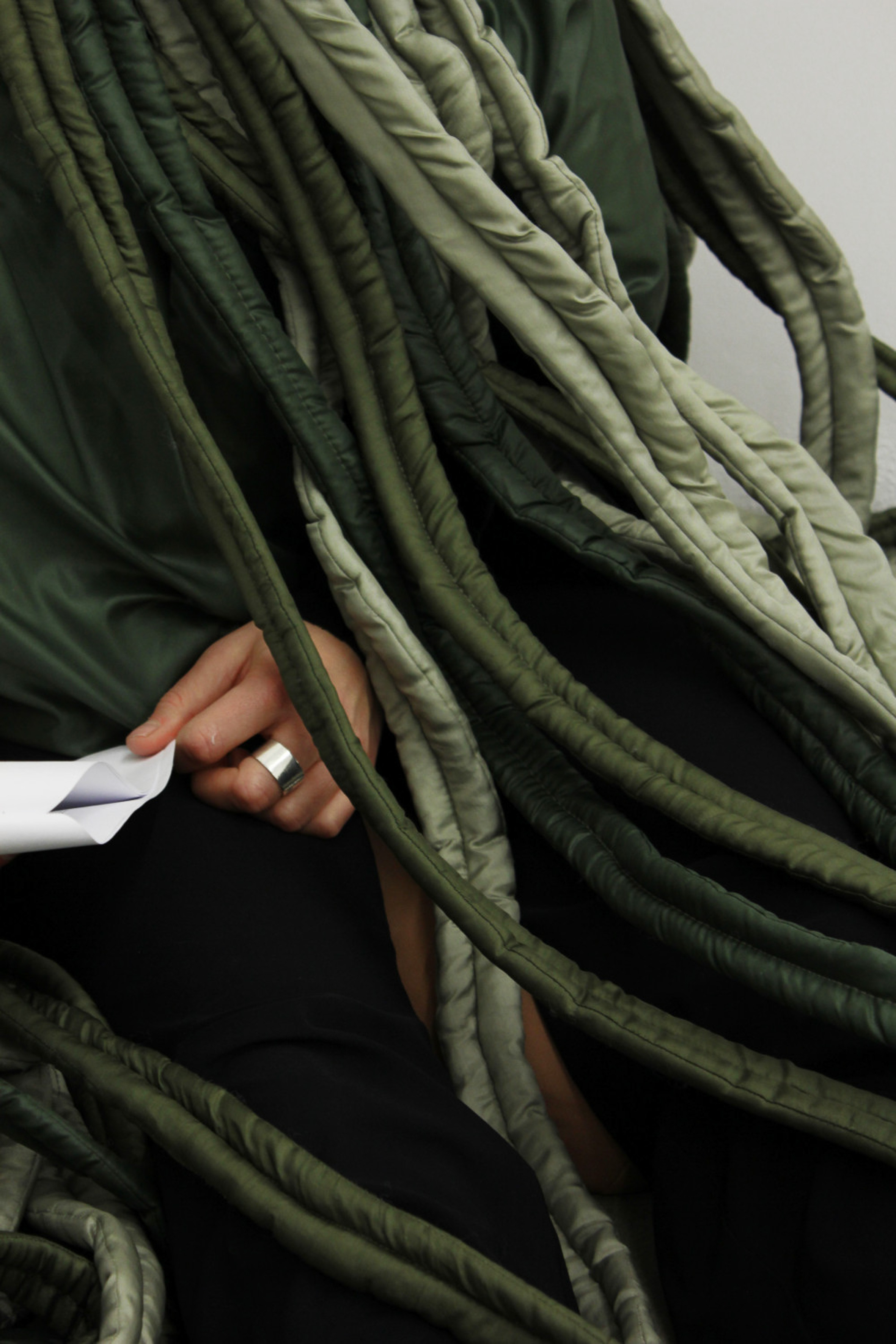













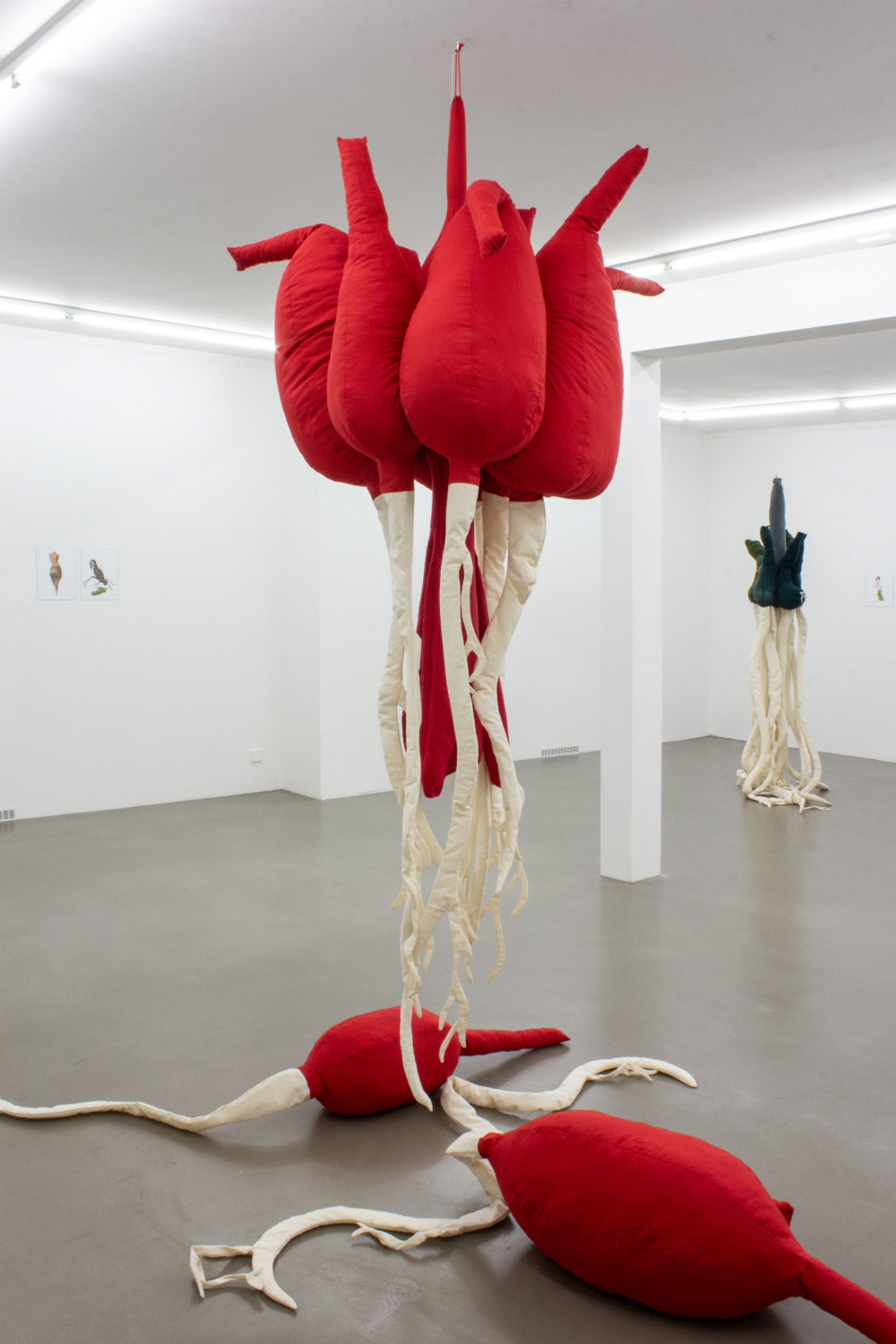
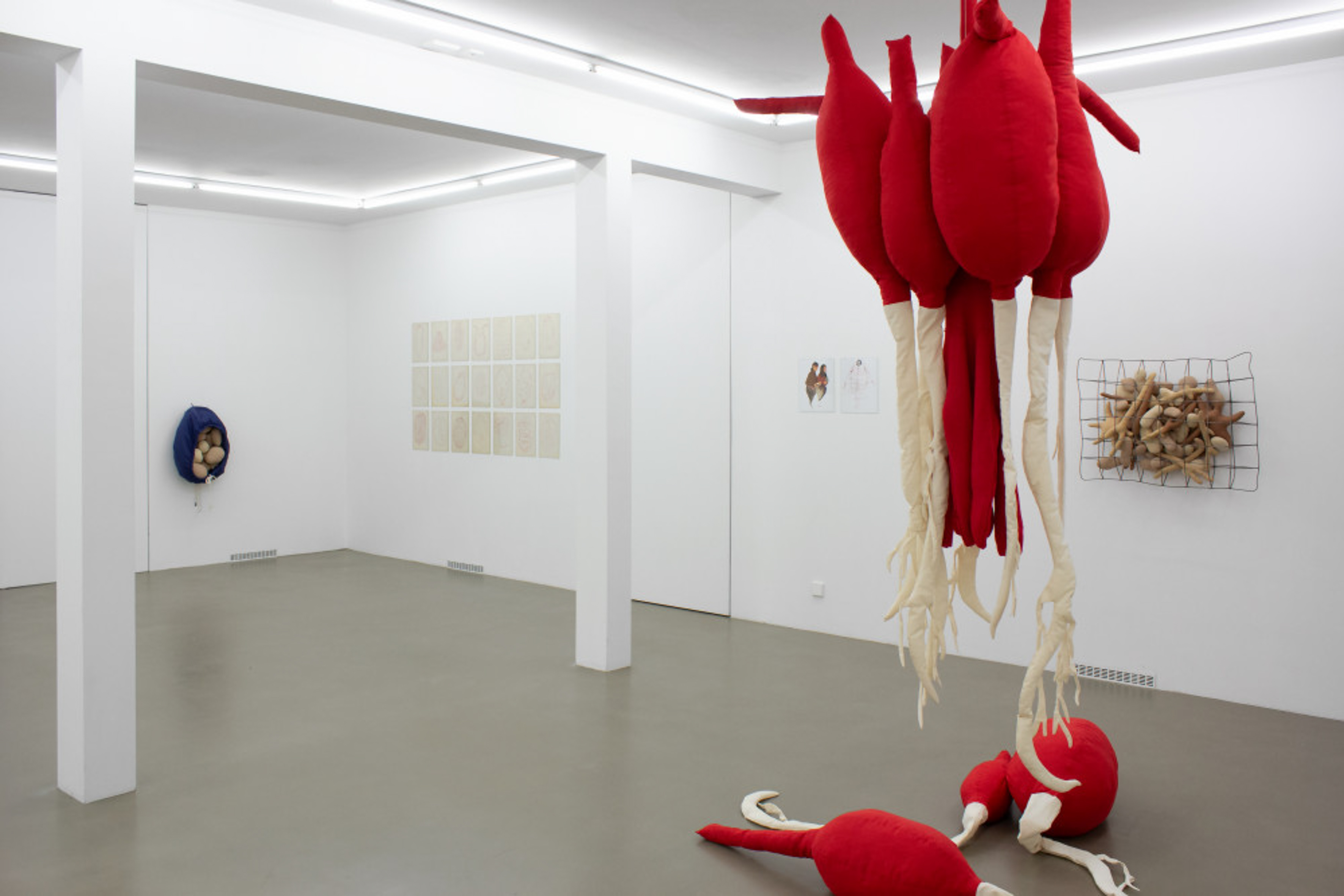

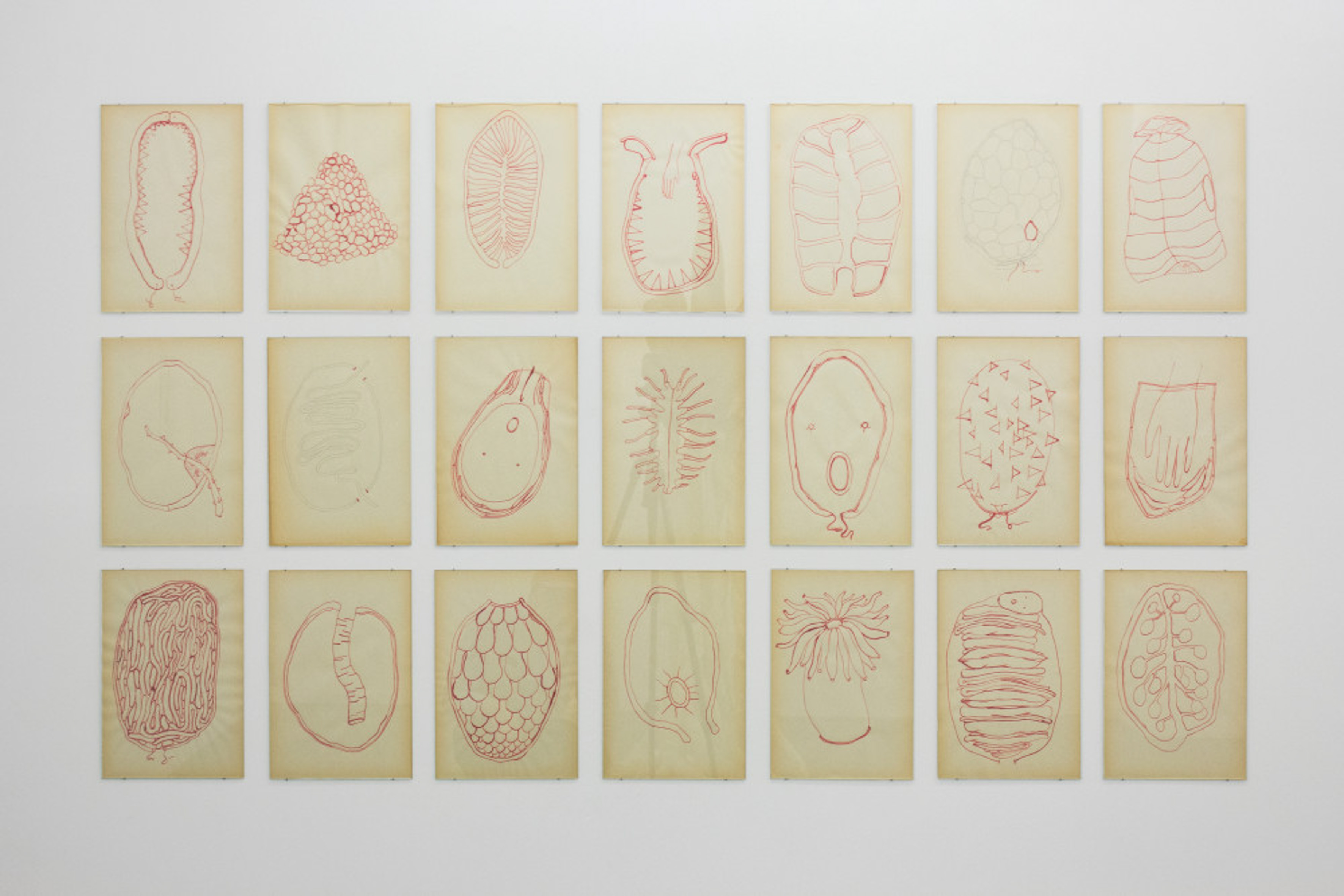
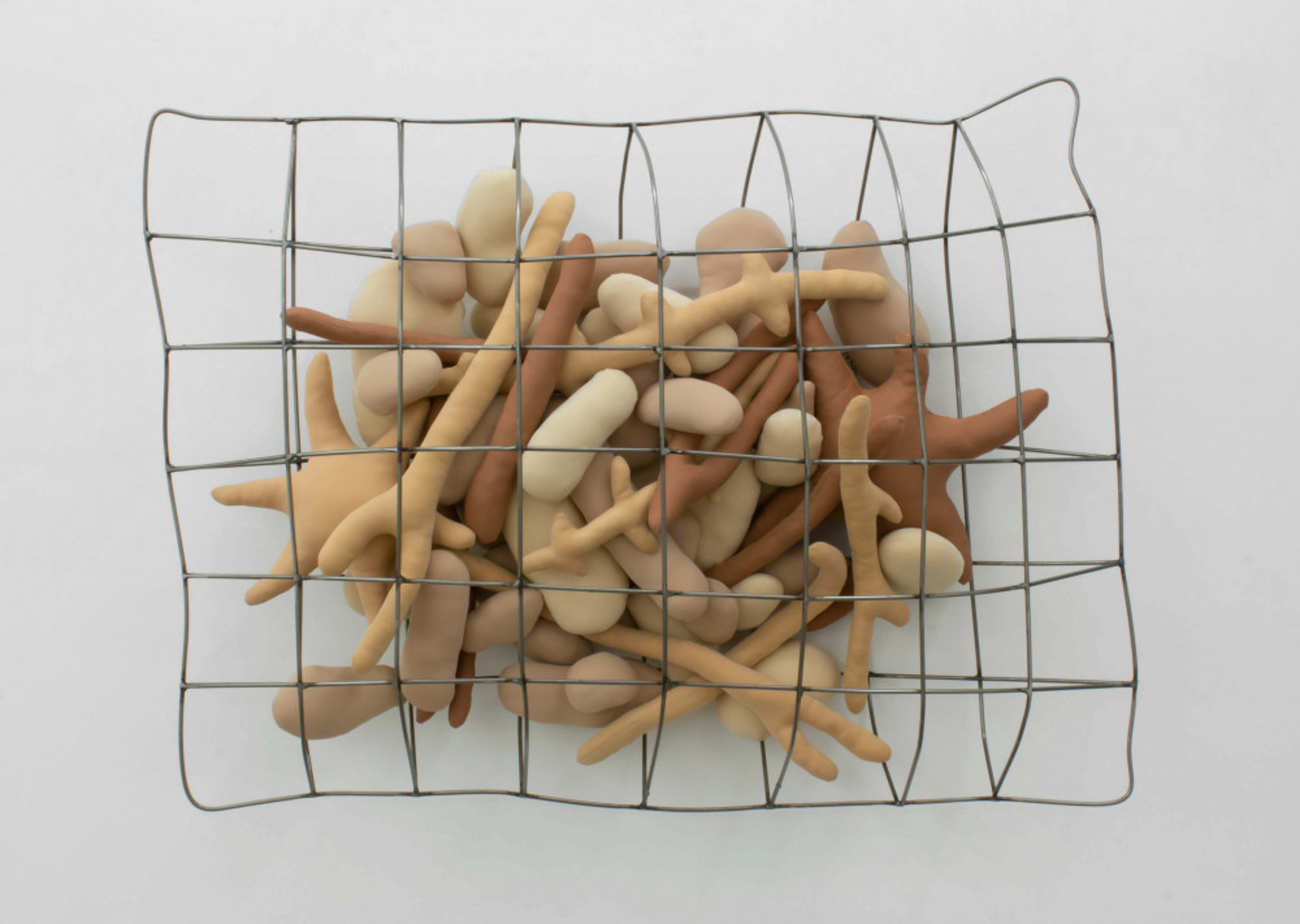

no one has yet determined what the body can do
It has been almost four centuries since Spinoza wrote about the mystery of our bodies in his Ethics; how bodies act in accordance with their own law that cannot be fixed by laws of nature nor by determinations of mind. Despite all the subsequent scientific research and innovation, what he stated is still somehow true. The body produces itself as much as it is produced by other bodies as it journeys in and out of various plateaus and strata. As humans we have subsumed our corporeal, political and social subjectivities under micro- and macro-models while we confront the hard facts of the world over and over again, day in and day out. While such an everyday chemistry is tough on the body’s chemistry, that space of indetermination Spinoza addresses in conjunction with affect, and the various forms and shapes that irregularity takes gift us unexpected moments of freedom.
Eva Koťátková’s new series The Unrooted: Sleeping woman going to battle in drawings, costumes (that can be performed on spot) and dream scenarios may be seen as a contemporary Gaia-oriented feminist response to the 20th century avantgarde Antonin Artaud’s much-quoted statement about the freedom of the unregulated body: “When you will have made him a body without organs,/ then you will have delivered him from all his automatic reactions /and restored him to his true freedom.” In Koťátková’s boundless myth- , dream- and fairytale-gilded universe, the body can be delivered out of all automatic reactions through resistance drawn up from imaginary worlds, daydreams and non-ordinary states of consciousness. She then playfully intervenes in the physicality and corporeality that is taken for granted, looks for the empty spaces inside and generates forms and spaces that would make use of that emptiness for another kind of survival on the edge of the world.
How much are we part of the life we are living? How much can we embrace the cycle between life which may turn to death and death which may turn to life? Unrooted as a metaphor speaks of the place in- between life and death. It is a place of anger and displacement in that “time of monsters” Gramsci speaks about between the old world and the new one. At the same time it is a place of making and compiling stories; stories that are medicine which strengthen the body in its freedom, the individual and the community. Over time, many old stories have lost their various teachings concerning love, sex, money, marriage, birthing, death and transformation. Most collections of fairy tales and myths have been cleaned of their perverse, pre-Christian, sexual elements; of their recipes, prescriptions and solutions. Willingly squeezed and exploited among the control structures of capitalist life, we contemporary humans continue to look for such missing ancient wisdom, information and rituals; for other meanings that collapse the binary logic.
Western thought in the early modern period separated body from mind, emotionality from rationality and spirituality from everyday reality. Addressing this shortcoming in mainstream philosophy, Luce Irigaray wrote: ‘‘In our tradition […] truth has too often been considered to be something exclusively mental, unless it has been treated as the reality of natural beings, of objects or things of the world.’’ Within such a frame the human mind has been taught that change can only be named as such if it is a radical rupture, from one day to the next, and the human mind’s singularity may not render such a major rupture possible.
Yet it is possible not to surrender to the partitioning of the world, nor to irreconcilable differences, binary divisions, the opposition of species, and genres. As Xiang Zairong rightly notes in an article from the beginning of the pandemic: “Luckily, besides the “Cartesian simple ideas,” humanity has a huge reservoir of rich imaginations and philosophies, especially those epistemologies that have long been deemed un- scientific by Reason: indigenous cosmologies have always argued that we must understand and treat the world as an interconnected, living organism with supreme complexity, fragile resilience and indeed mystique.”
The half-human, half-womxn, half-plant #unrooted’ characters Koťátková has created are agile, agitated and forceful. They build their stories within. Their rationality comes from their emotionality, their spirituality is rooted in everyday political reality. They sleep in order to be awake. They refuse to be contained. They add up as new androgynous archetypes of the wild woman Clarissa Pinkola Estes has been collecting from various corners of the world for a long time. They address the present that is always in a process of division between pastness and futureness, that is composed of a gap or hiatus that can never be closed or reconciled. They remind us that we shouldn’t reconcile: instead we should insist on dreaming.
[Text: Övül Ö. Durmusoglu]
©YYYYMMDD 2021 All content and design by Daniela Grabosch + Ricardo Almeida Roque unless otherwise stated. Images, Videos and Texts can only be used under permission of the author(s).